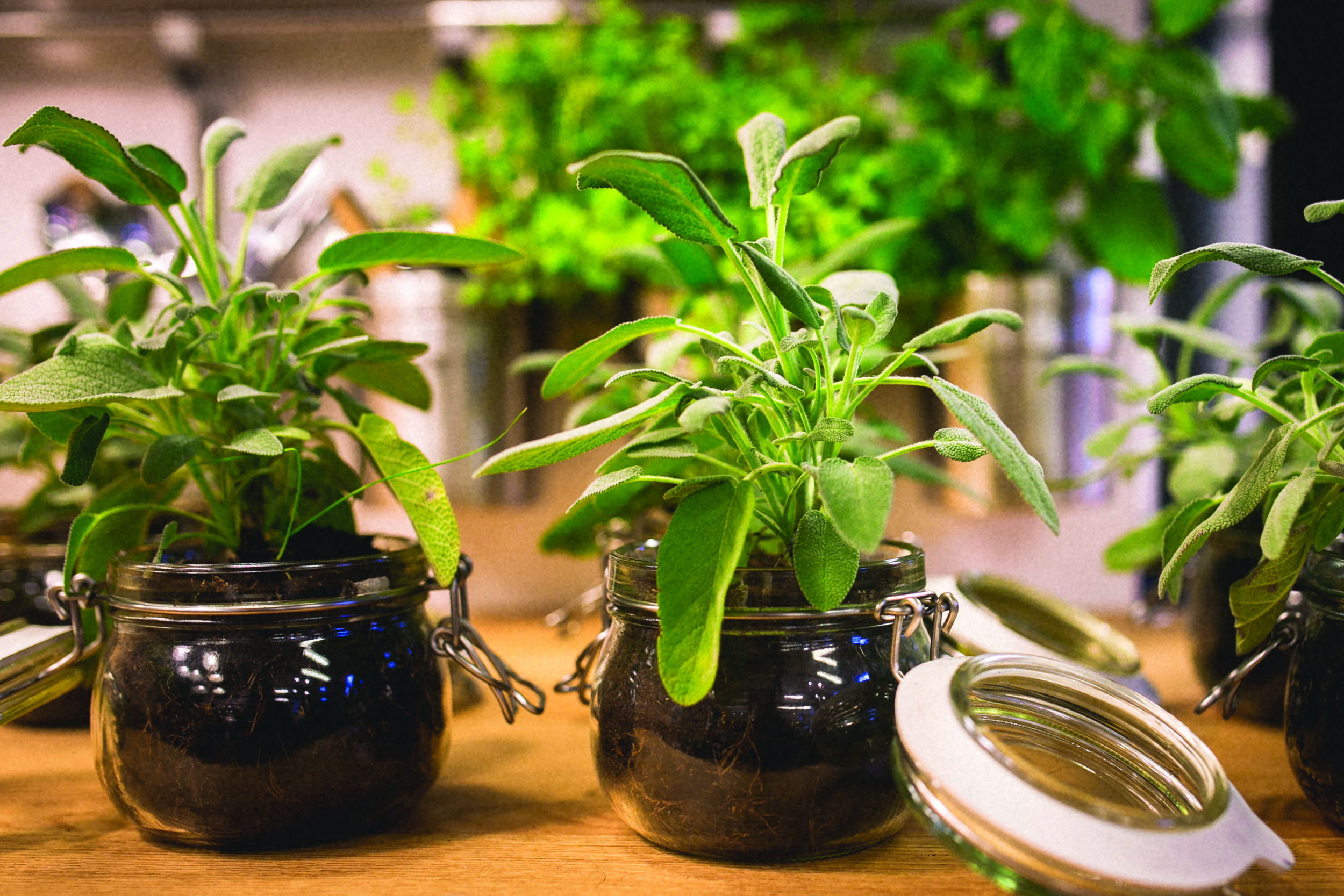Indoor gardening for a year-round harvest
By Erin Covey-Smith
THE ABUNDANCE AT the farmers’ markets may be dwindling, and your garden may have hunkered down for a long winter’s nap, but that doesn’t mean you have to give up on fresh, local produce for the winter. In fact, you can bring it even closer to home by planting an indoor vegetable and herb garden that will produce all winter long.
Indoor gardening can be as simple as a pot of basil on your windowsill or as complex as a carefully monitored, humidity- and light-controlled room full of everything from tomatoes to bush beans to apples.
In essence, you can grow almost anything indoors, as long as you have the space for it and the right supplies. A few of the most accessible and successful options include salad greens, kale, chard, and cherry tomatoes. Herbs such as basil, rosemary, thyme, chives, mint, parsley, and Vietnamese coriander are also easy to grow, requiring less light and/or water than other herbs.
The essentials
According to Chris Gillard, owner of the Indoor Plant Kingdom, some of the essentials for successful winter gardening include good organic seeds and soils, planting trays, and a grow light. “Pay close attention to the plants,” he advises. “Keep it simple and keep it clean and make sure to have proper air flow with a small fan” (thus keeping warmth and moisture circulating evenly around your plants).
The supplies Gillard recommends highlight some central considerations when planning your indoor garden, including soil, light, water, and temperature.
Unless you are using a hydroponic system, experts recommend an indoor-specific potting mix that remains loose and drains well, yet contains enough organic matter to hold nutrients and moisture. Bringing soil in from outside is not recommended since it is often too heavy and can contain insects and weed seeds. Most indoor plants like a bit of fertilizer from time to time since they quickly take up the nutrients in the potting soil (note: many herbs are an exception to this rule).
In general, vegetables and other plants like as much as 14-16 hours of sunlight, conditions that are but a dream during Maine winters. Grow lights are the recommended solution. Compact fluorescents are often considered a good go-to, as they do not produce too much heat and are smaller and more efficient than older forms of fluorescents. Gillard recommends a small T-5 fluorescent grow light that comes in either 2-foot or 4-foot fixtures. If you choose to get serious, a homemade or store-bought “grow-tent” complete with mirrors and reflectors will maximize your light and even out its distribution.
If you’d rather keep it simple, the light from a sunny south-facing window is sufficient to grow many herbs, and some leafy greens like arugula and kale will do just fine. Gillard also recommends trying sunflower, tot soi, and beet sprouts – all of which are more resistant to pests and molds and have a short growing cycle, allowing for easy success.
Indoor plants in containers can dry out fast and require more water than outdoor garden plants. That said, most herbs prefer somewhat dry, cool conditions. So it’s important to keep a close eye on watering. If you over water, you may find wilting from the stem toward the leaves; lower leaves dropping; discoloration; slow or no growth; and wilting foliage. Under watering can result in wilting along the outer tips of the leaves first; dry soil; brown edges along the leaves; wilting foliage; and leaves and flowers that drop prematurely.
Most indoor plants do well in temperatures between 65-75 degrees. If they are too hot, they will be small and weak; too cold and they may have yellow leaves that fall off. Again, herbs, especially those that bolt quickly like dill and cilantro, are better off at cooler temps.
Bringing outdoor plants inside
An indoor garden can be started from seed, or you can bring some of your outdoor plants inside, especially if they are already in containers (marking an exception to the “don’t use outdoor soil” rule). Outdoor plants will require an acclimation period. Let the soil dry out when first moving them in, and then water moderately, giving them a quarter-turn each week to evenly distribute the sunlight. They will absorb the most light in a south-facing window.
Depending on the plant, trimming it back when bringing it inside can be helpful – the plant will have less mass to support during its sensitive adjustment period. Perennials like marjoram, oregano, rosemary, and sage move well from outdoors to indoors, as long as they are given due attention once they have made their winter migration. Don’t lock up your garden shed just yet – experiment this winter and you’ll be enjoying some fresh green through even the coldest winter days.
quick & easy beginner tips
Hydroponics? Grow lights? Special soil? Is it all a bit much? Here are two quick and easy ways to grow food indoors: Re-grow store bought scallions, celery, or lemongrass. Next time you buy scallions or celery, save the root ends and place them root-down in a few inches of water. Set in a sunny window, refresh the water every few days, and watch as they regenerate new stalk! Lemongrass is similar: make sure it has a good amount of stem and the bottom is intact; trim the top and put it in a container with a couple inches of water. It will send out roots, sprouts, and many new stems which can be harvested and used. Buy a mushroom kit. Mushrooms are a popular and thriving local food in Maine. North Spore (www.northspore.com) sells grow-your-own mushroom kits in four varieties: oyster, shiitake, lion’s mane, and chestnut. Simply spray water into the plastic bag in which the mushroom spores are encased, and after a few weeks you will have your own mushroom harvest (see the kit for complete instructions).
This article is reprinted from the fall 2016 issue of Green & Healthy Maine Homes. Subscribe today!



